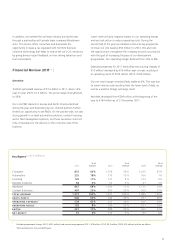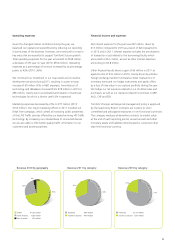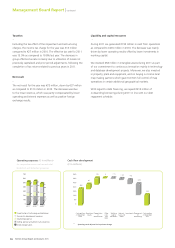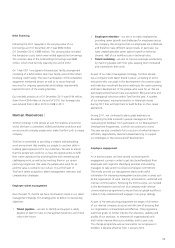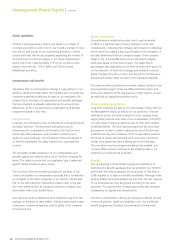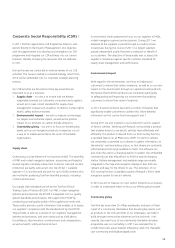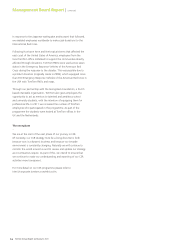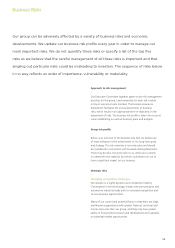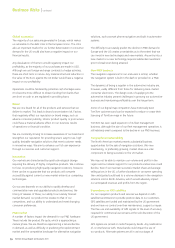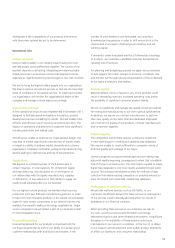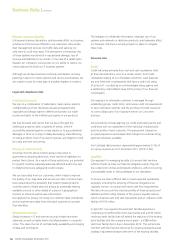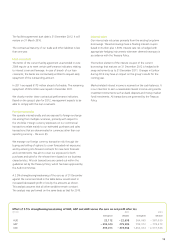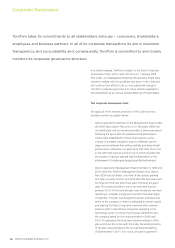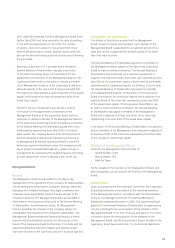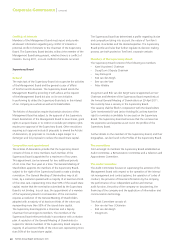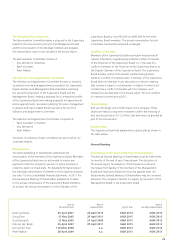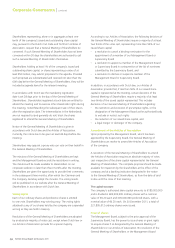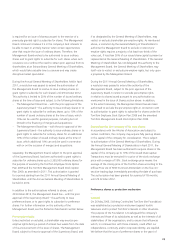TomTom 2011 Annual Report Download - page 18
Download and view the complete annual report
Please find page 18 of the 2011 TomTom annual report below. You can navigate through the pages in the report by either clicking on the pages listed below, or by using the keyword search tool below to find specific information within the annual report.TomTom Annual Report and Accounts 2011
16
solutions, such as smart phone navigation and built in automotive
systems.
The diffi culty to accurately predict the decline in PND demand in
Europe and the US creates uncertainties as to the extent that we
can invest in new technologies and new markets. Any entry into a
new market or a new technology requires substantial investment
prior to break-even being attained.
Non-PND business
The navigation experience for our end-users is similar, whether
the navigation system is built in the dash or provided on a PND.
The dynamics of being a supplier in the automotive industry are,
however, vastly different from those for delivering mass-market
consumer electronics. The design costs of supplying to the
automotive industry present challenges in growing our automotive
business and maintaining profi tability over the longer term.
Some of our digital map competitors have historically been
TomTom customers and can be expected to reduce or cease their
licensing of TomTom maps in the future.
TomTom has seen rapid expansion of its fl eet management
business, although the size of our fl eet management operations is
still relatively small compared to the decline in our PND business.
Geographical sustainability
The North American market presents substantial business
opportunities for the sale of navigation solutions. We view
maintaining, or preferably growing, market share as a vital
component to being successful in the US market.
We may not be able to maintain our volume and profi ts in the
region and our retailer support for our products and services could
decline. Even if we maintain successful market share and average
selling prices in the US, a further slowdown in consumer spending
than anticipated could lead to a volume decrease in the navigation
solutions sold in North America, which would adversely impact
our anticipated revenues and profi ts from the region.
Dependency on GPS satellites
For our navigation products and services we depend on GPS
satellite transmissions to provide position data to our customers.
GPS satellites are funded and maintained by the US government
and we have no control over their maintenance, support or repair.
The free use and availability of GPS signals to the level of accuracy
required for commercial use remains at the sole discretion of the
US government.
GPS signals are carried on radio frequency bands. Any reallocation
of, or interference with, these bands could impair the use of
our products. Alternate systems are all in various stages of
Global economics
The majority of our sales are generated in Europe, which makes
us vulnerable to the debt crisis in the European Union. The US is
also an important market for us; further deterioration in consumer
demand in the US would also have a negative impact on our
fi nancial results.
Any devaluation of the Euro would negatively impact our
profi tability, as the majority of our purchases are made in USD.
Although we use foreign exchange contracts to hedge activities,
these are short term in nature. Any material structural reduction in
the value of the Euro against the US Dollar would have a negative
impact on our profi tability.
Operations could be hindered by potential cash shortages were
it to become more diffi cult to obtain funding from banks that
are short on cash or are regulated in providing loans.
Brand
We use one brand for all of the products and services that we
deliver to market. This leads to brand concentration risk. Factors
that negatively affect our reputation or brand image, such as
adverse consumer publicity, inferior product quality or poor service
could have a material adverse effect on our business, results
of operations or fi nancial condition.
We are constantly striving to increase awareness of our brand and
strengthen our reputation for providing smart, easy-to-use, high-
quality, desirable navigation solutions that meet customer needs
in innovative ways. We aim to enhance our full user experience
through our services and customer support.
Innovation
Our markets are characterised by rapid technological change
requiring the delivery of highly competitive products. We continue
to focus on producing high-quality navigation solutions, however,
there can be no guarantee that our products will compete
successfully against current or new market entrants or competing
technologies.
Our success depends on our ability to rapidly develop and
commercialise new and upgraded products and services; the
timing of releases of these; our ability to accurately forecast
market demand; our product mix relative to that of our
competitors; and our ability to understand and meet changing
consumer preferences.
PND market
A number of factors impact the demand for our PND hardware.
These include the product life cycle, which is approaching a
mature phase. We are therefore experiencing a natural decline
in demand, as well as diffi culty in predicting the replenishment
market and the competitive landscape for alternative navigation
Business Risks | continued



